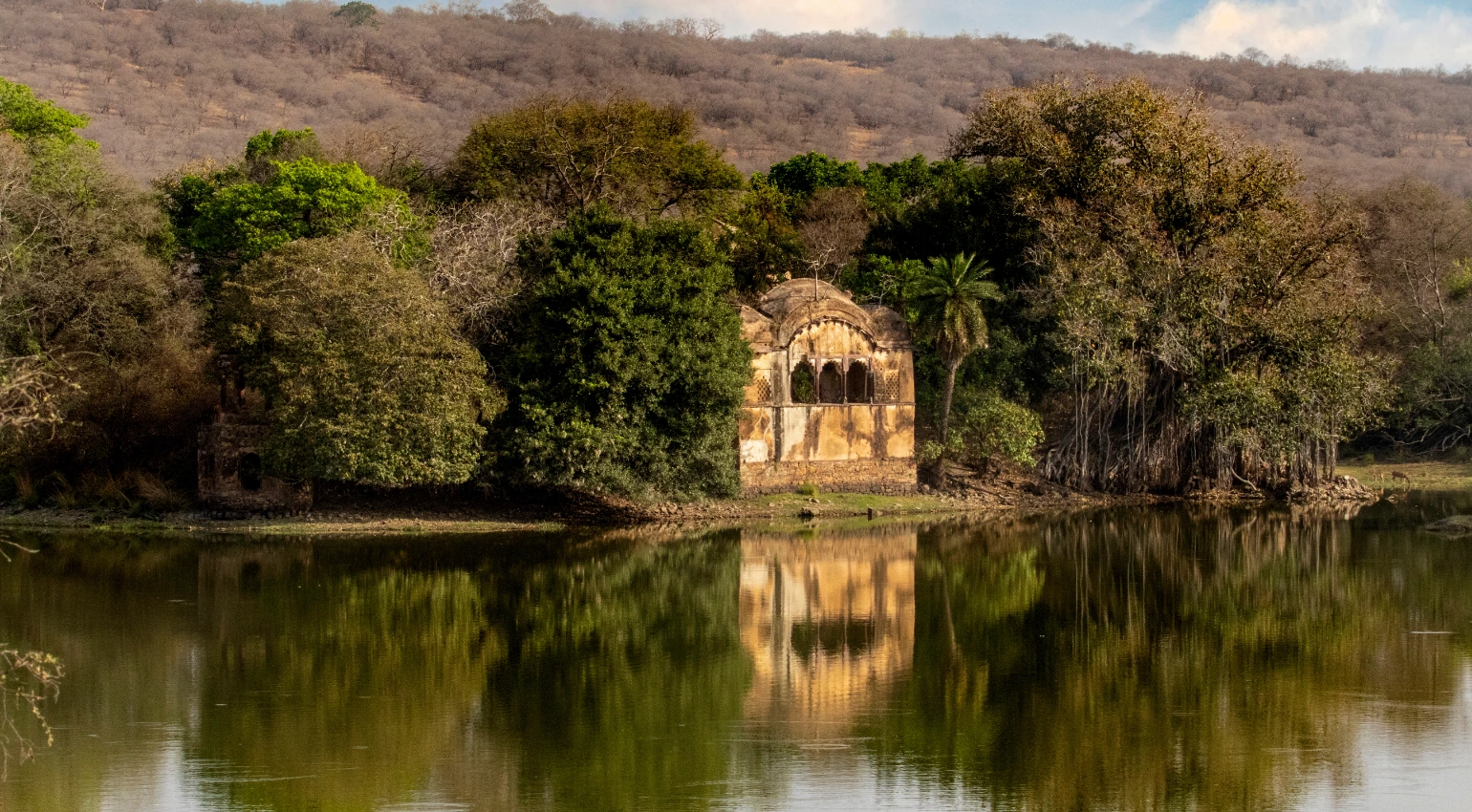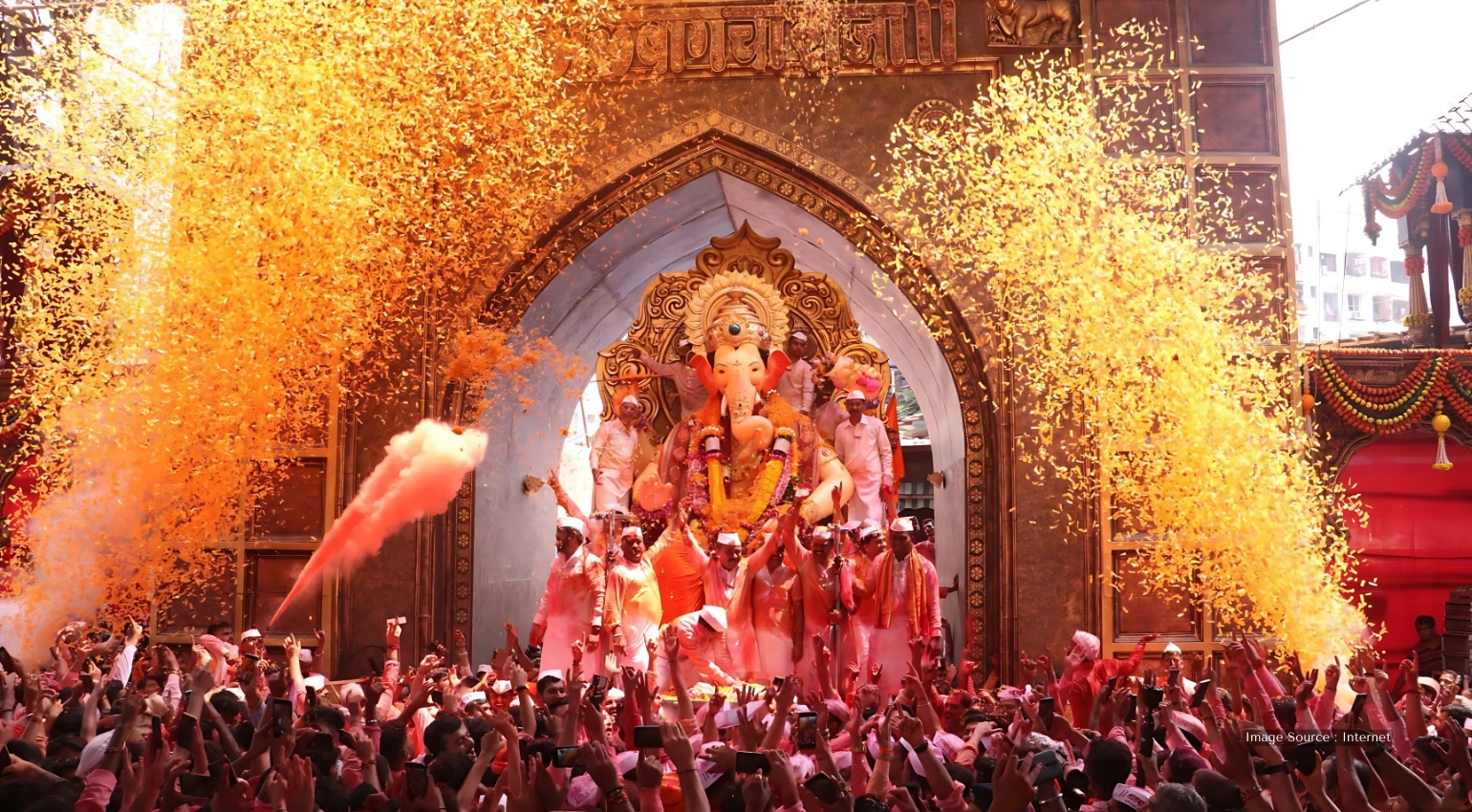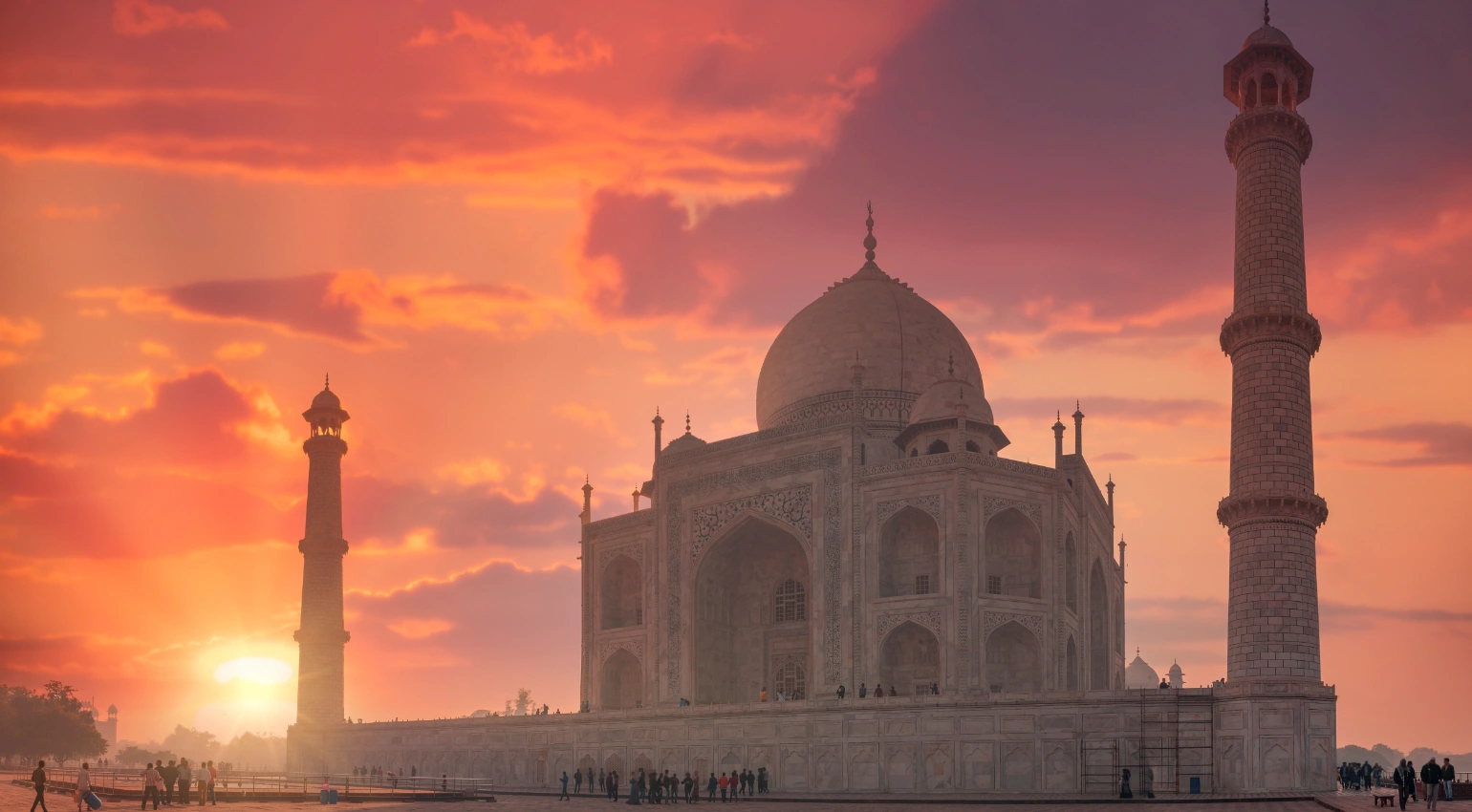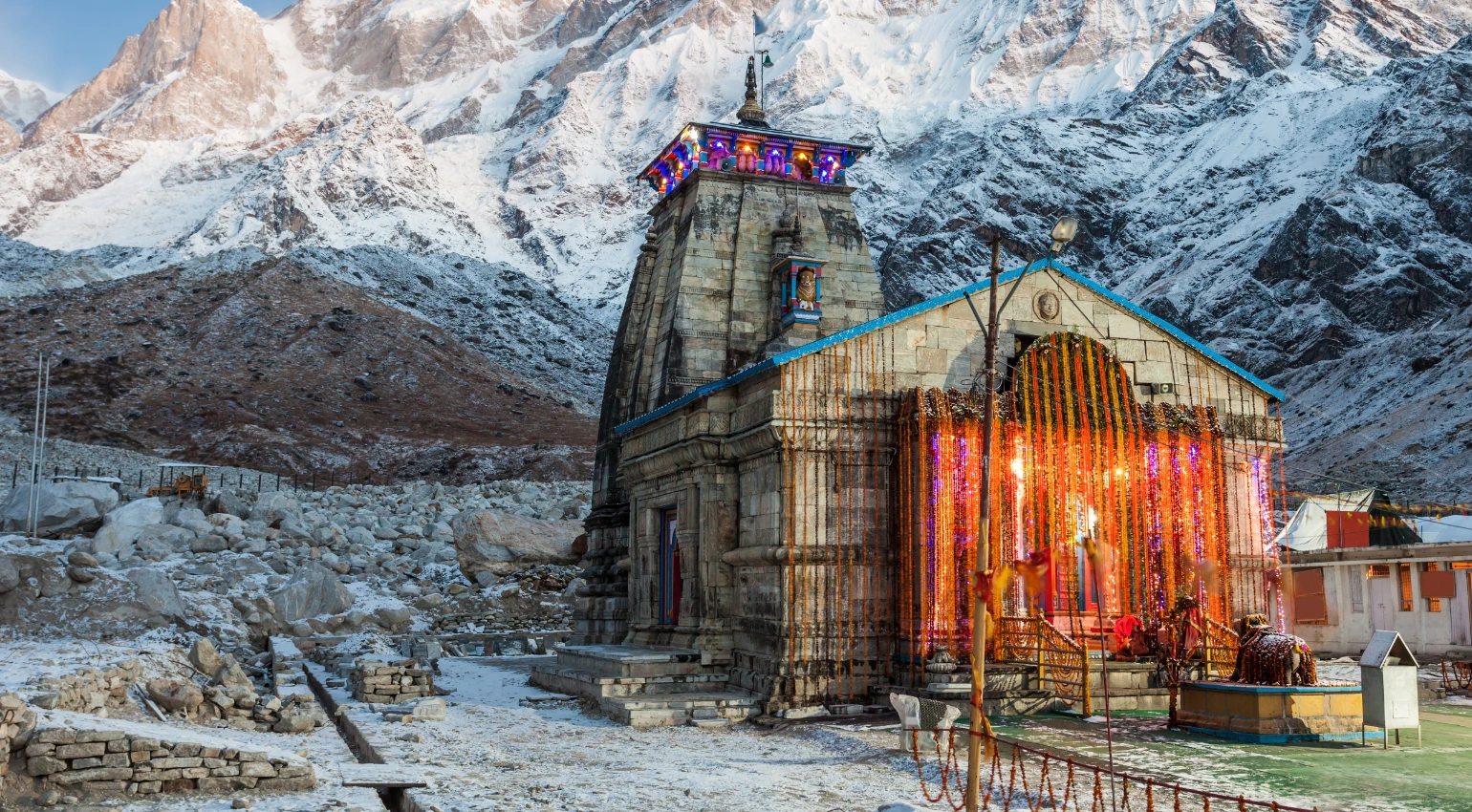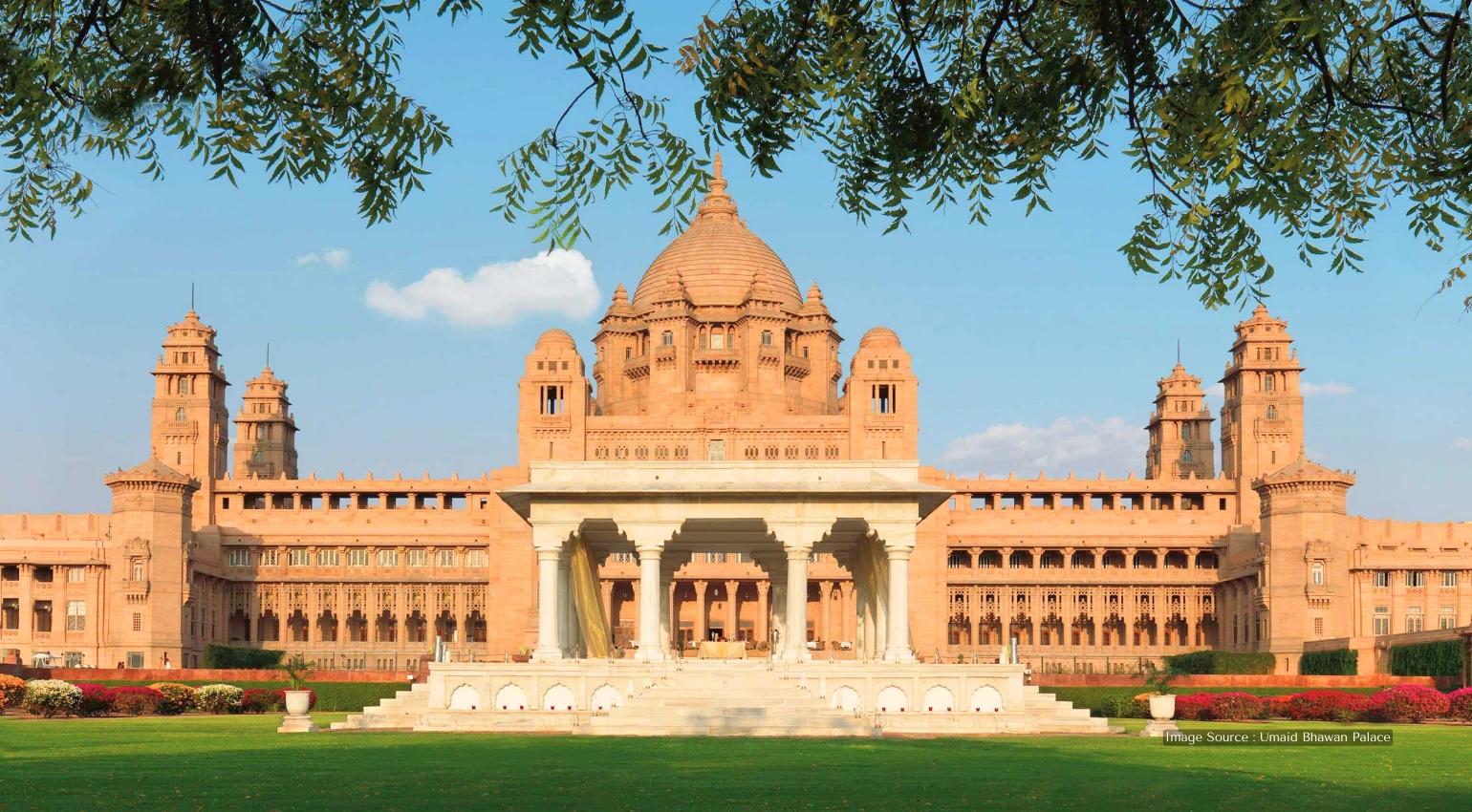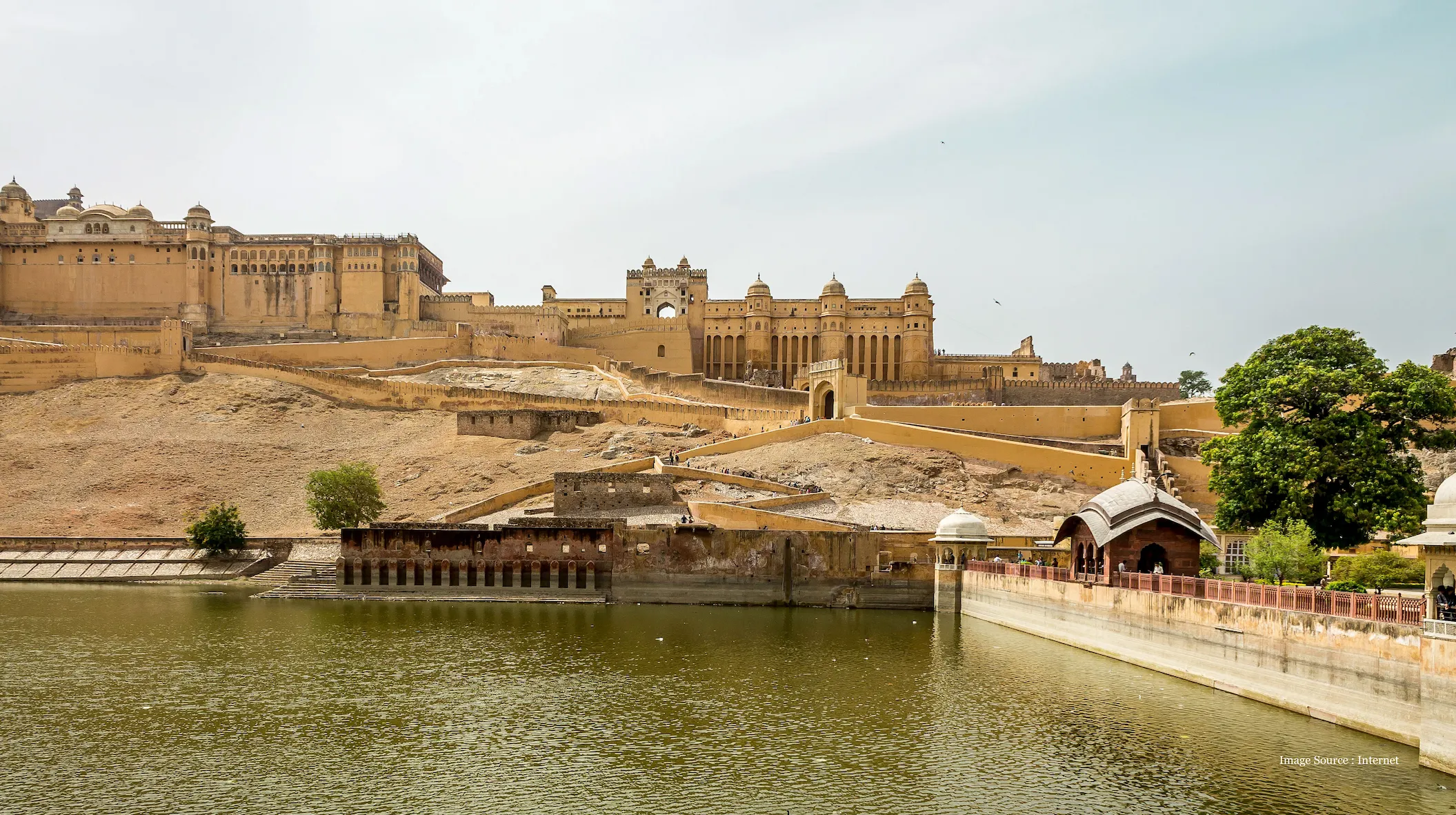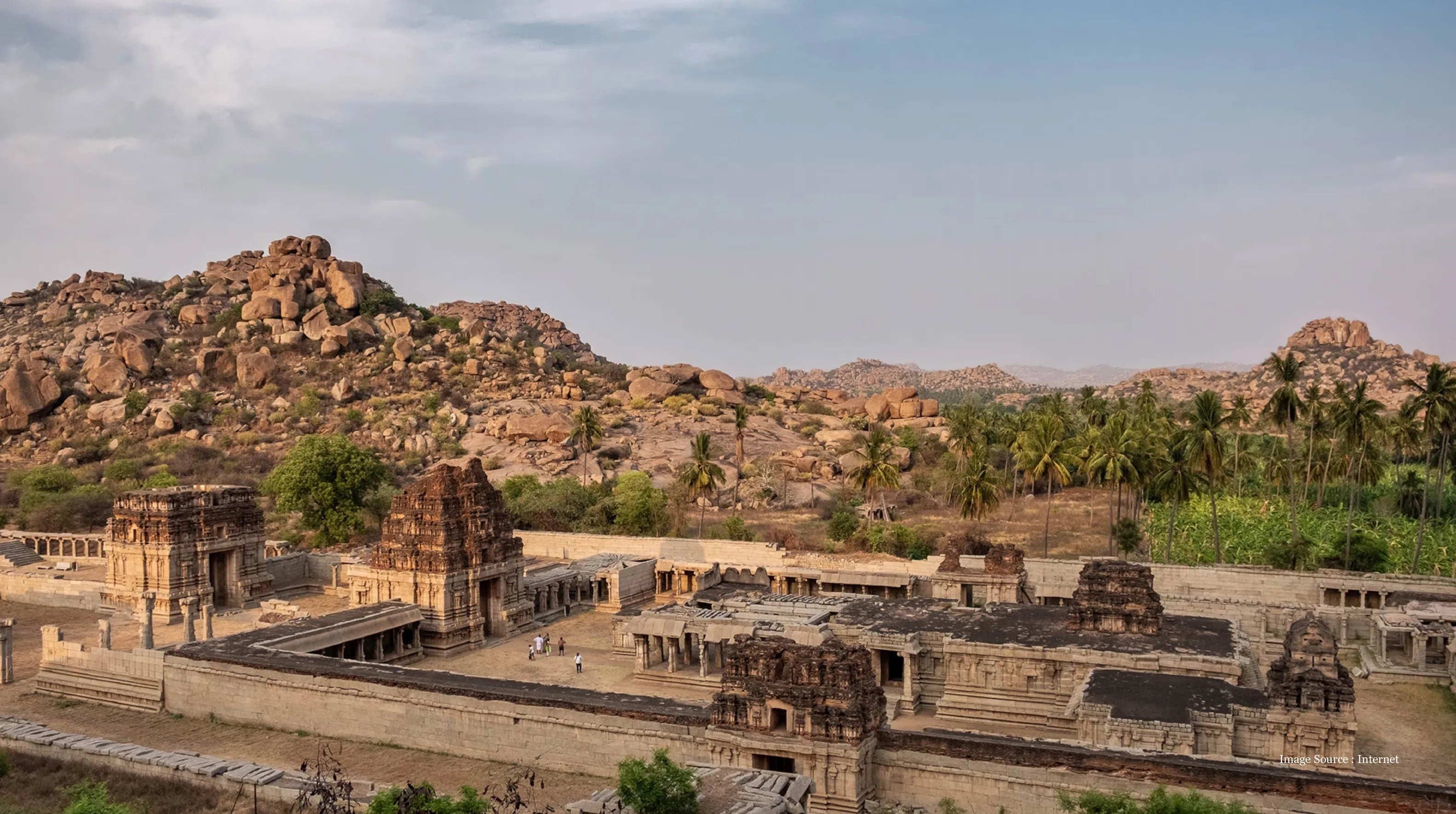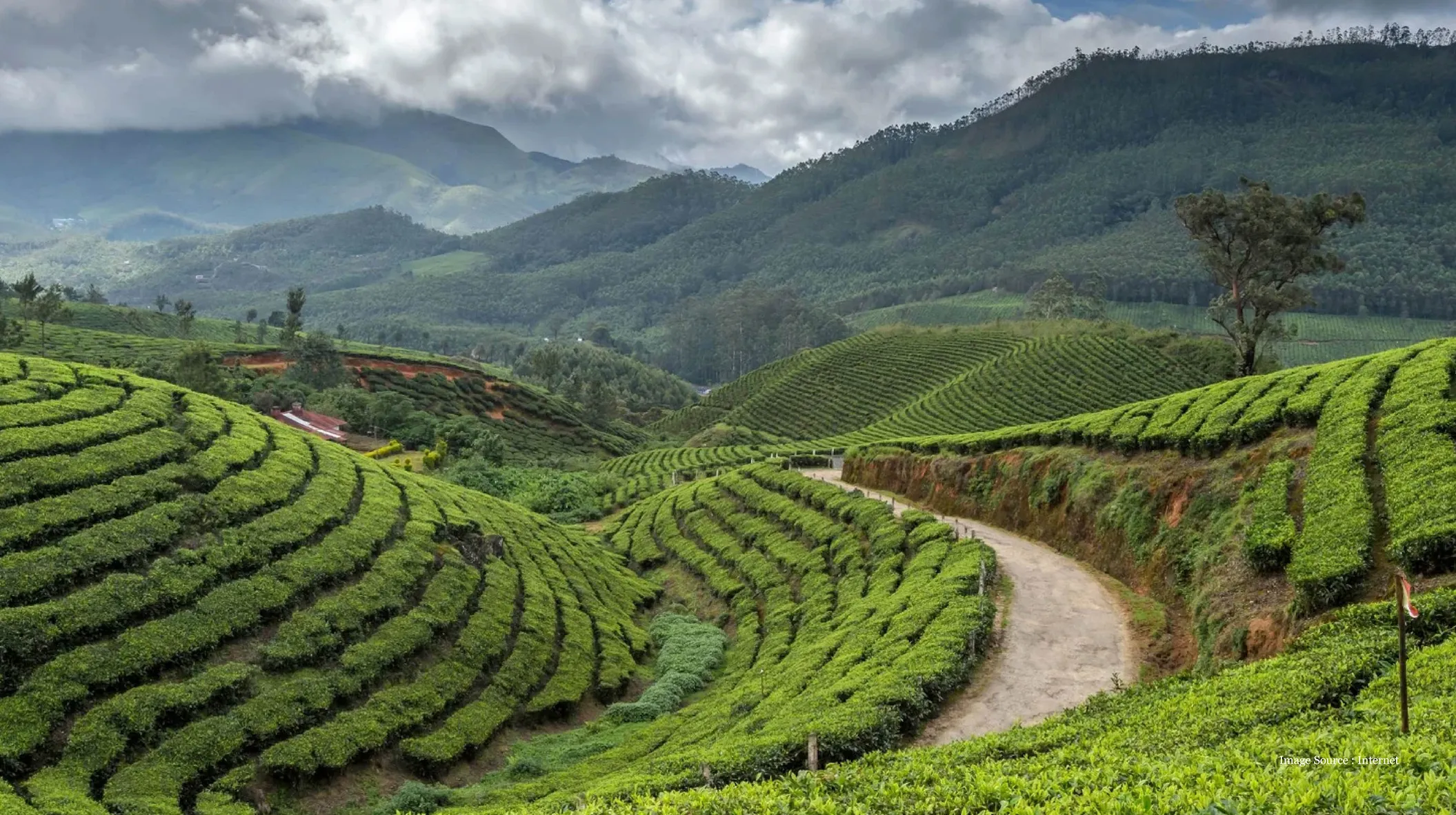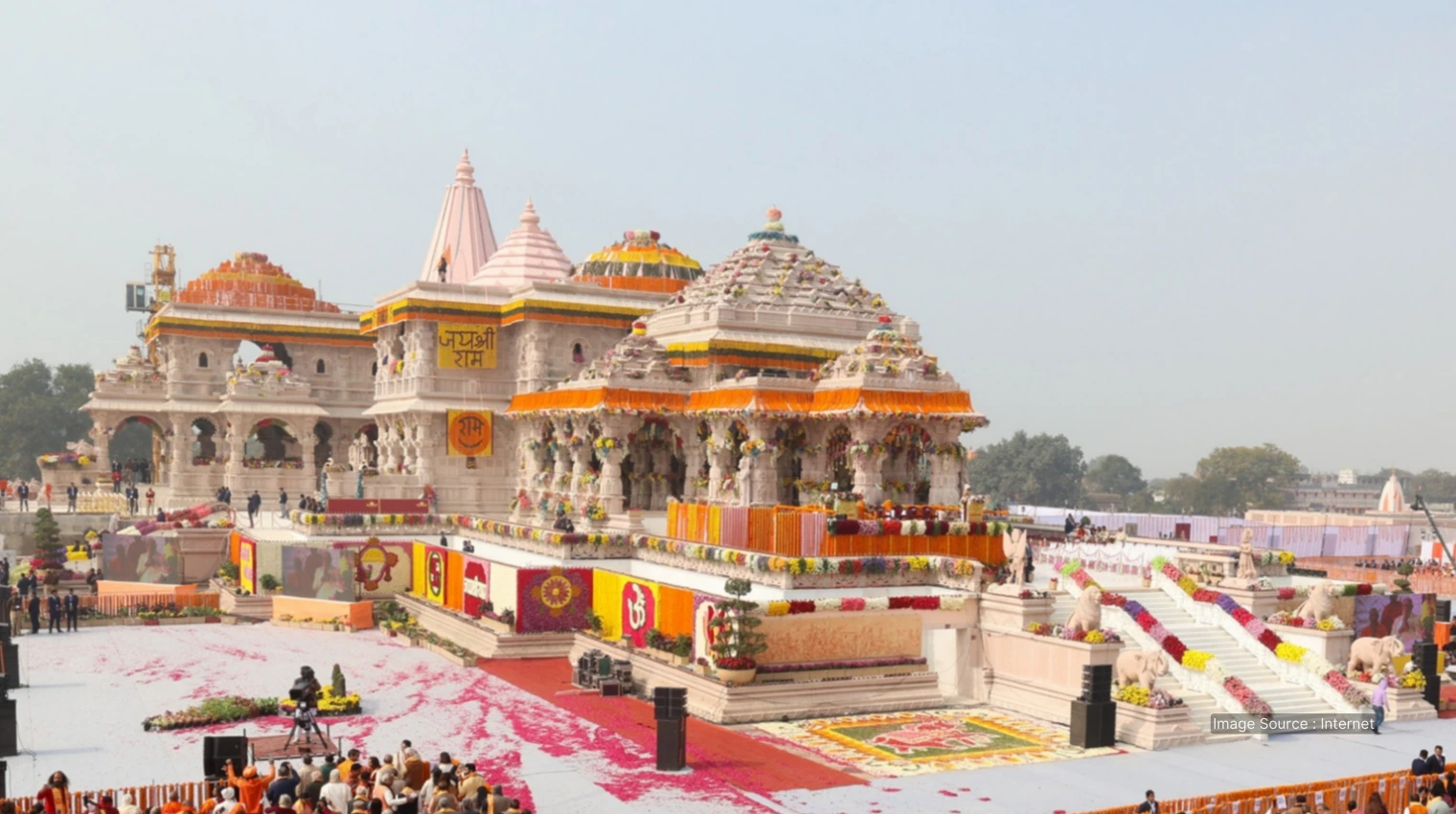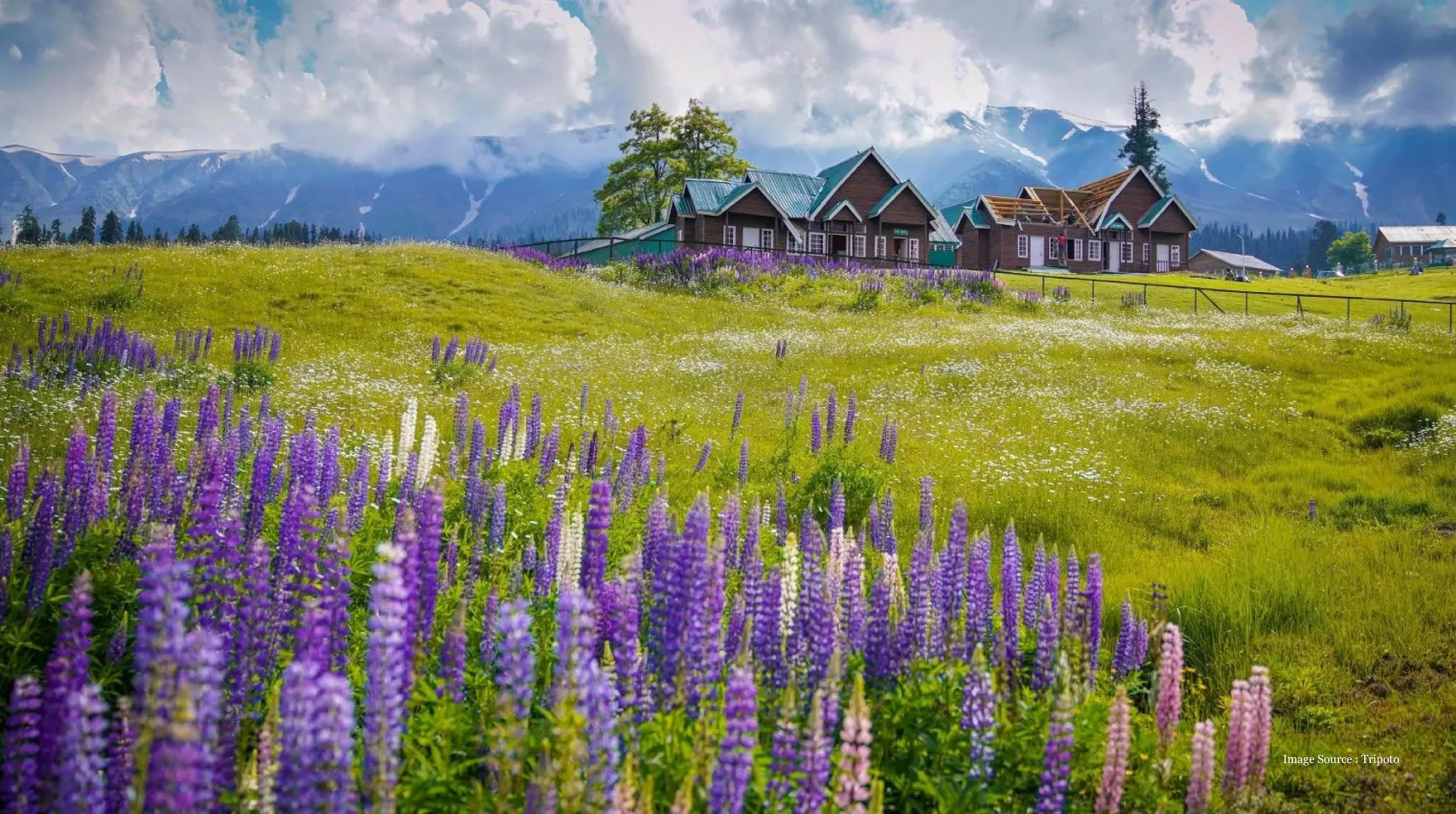- Which are the Best Places to See in North India?
- How to Explore North India?
- Which are South India’s Best Places to Go?
- Final Words
- FAQs
- 1. Delhi
- 2. Agra: More Than Just The Taj Mahal
- 3. Jaipur: Pink City With Colorful Stories
- 4. Udaipur: Venice of the East
- 5. Varanasi: Oldest Living City on Earth
- The Golden Triangle
- Cultural Rajasthan
- Spiritual Sojourn
- 1. Alleppey: Backwater Bliss
- 2. Hampi: Ruins from an Empire
- 3. Madurai: Temple City That Never Sleeps
- 4. Kochi: Ancient Spice Port
- 5. Munnar: Tea Plantations & Rolling Hills
Last Updated : Nov 06, 2025 | View Count : 1264 | Read Time : 9 min
Best Places to See in India: Your Complete Guide to Exploring this Incredible Subcontinent
I still remember my first time traveling to India. I thought I'd "see it all" in two weeks– that certainly didn't happen. Years & countless visits later, I'm still discovering new corners of this incredible country. This is the beauty of India– you can visit ten times and have completely different experiences each trip. So when people ask me about the best places to see in India, I usually smile and ask how much time they've got. But I get it, you need to start somewhere! And in this blog, I have covered the destinations that have stuck with me over the years, organized in a way that actually makes sense for planning your trip.
What are the best places to see in India for first-time visitors
If you’re visiting India for the first time, I highly advise you start with North India's Golden Triangle—Delhi, Agra, and Jaipur—which also covers the iconic Taj Mahal. South India has a contrasting pace of life with Kerala's tropical backwaters, Hampi's ancient ruins, and Madurai's gorgeous temples. Beyond these, Mumbai is a bustling yet legendary city to explore & Varanasi delivers for spiritual seekers
Table of Contents
- Which are the Best Places to See in North India?
- How to Explore North India?
- Which are South India’s Best Places to Go?
- Final Words
- FAQ
Which are the Best Places to See in North India?
North India is where most first-timers start, and honestly, that's not a bad strategy. You've got the iconic monuments, the dramatic landscapes, and enough variety to keep you captivated for weeks.
1. Delhi
Delhi is India's capital and your likely entry point. It's also where East meets West meets 5,000 years of history, all competing for space on the same streets. I won't sugarcoat it. Delhi is intense. The traffic alone might make you question your life choices.
But stick with it. Old Delhi's Chandni Chowk market is sensory overload in the best possible way. The smell of street food, the sounds of vendors calling out prices, the visual chaos of electrical wires crisscrossing overhead. It shouldn't work, but it does.
Then you've got the monuments. Red Fort, Jama Masjid, Humayun's Tomb (which is basically the blueprint for the Taj Mahal). Qutub Minar stands there like it has for 800 years, unbothered by the city growing around it. Don’t skip the Lutyen’s Zone– especially India Gate along with Lotus Temple, Akshardham. Delhi doesn't pick one era and stick with it.
What I always tell people is to get a private expert guide for at least one day here. The stories behind these places matter, and a good guide transforms piles of stone into living history. Plus, navigating Delhi without local help can eat up half your day just trying to figure out logistics.
2. Agra: More Than Just The Taj Mahal
Look, we all know why Agra is on this list. The Taj Mahal is probably the most beautiful building humans have ever created. I've been four times and it still takes my breath away every single visit. Go at sunrise if you can manage it. The way the white marble changes color with the light is something your camera won't quite capture but your memory will.
Here's what people miss though. Agra Fort is absolutely incredible in its own right. This massive red sandstone fortress was the main residence of Mughal emperors for generations. Shah Jahan, the guy who built the Taj Mahal, spent his final years imprisoned here by his own son. He could see his greatest creation across the river but couldn't visit it. There's something deeply moving about that.
3. Jaipur: Pink City With Colorful Stories
Jaipur earned its "Pink City" nickname when they painted the whole old city terracotta pink to welcome Prince Albert in 1876. The color stuck, and now it's part of the city's identity.
Amber Fort is the star attraction, sitting on a hilltop overlooking Maota Lake. The mirror work in the Sheesh Mahal is insane. Light one candle and the whole room sparkles like stars. City Palace sits right in the center of town and parts of it still function as the royal residence. The current maharaja still lives there, which adds this weird continuity to the whole experience.
Hawa Mahal (Palace of Winds) with its 953 windows is more fun from the outside than inside, but it photographs beautifully. Jantar Mantar, the astronomical observatory built in the 1700s, proves that science and architecture can create something genuinely beautiful together.
4. Udaipur: Venice of the East
Udaipur might be the most romantic city in India. Built around a series of artificial lakes, with white marble palaces seemingly floating on the water, it's got this dreamy quality that feels almost unreal.
Lake Palace sits in the middle of Lake Pichola and now operates as one of India's most exclusive hotels. Even if you're not staying there, take the boat ride around the lake at sunset. The City Palace complex stretches along the eastern shore, this massive creation of courtyards, gardens, and museums that took 400 years to build.
5. Varanasi: Oldest Living City on Earth
Varanasi is unlike anywhere else you'll ever visit. Mark Twain said it's "older than history, older than tradition, older even than legend." Walking the ghats (steps leading down to the Ganges River) at dawn while pilgrims perform their morning prayers and rituals, you're witnessing something that's been happening continuously for thousands of years.
It's intense though. The cremation ghats burn 24/7 because Hindus believe dying in Varanasi brings moksha (liberation from the cycle of rebirth). You'll see death treated as a natural part of life in ways that might challenge your comfort zone.
But there's also incredible beauty here. The evening Ganga Aarti ceremony at Dashashwamedh Ghat, with priests swinging massive fire lamps in synchronized patterns while bells ring and chants echo across the water, is one of the most powerful religious ceremonies I've ever witnessed.
The alleys are so narrow that you'll get lost. Guaranteed. Cows wander freely, shops sell everything from silk to street food, and somehow it all hangs together through sheer force of tradition.
How to Explore North India?
You could spend months in North India and not see everything, so most people focus on specific circuits. Here are the main ones that work well.
The Golden Triangle
This is the classic route: Delhi, Agra, Jaipur. It's called the Golden Triangle because these three cities form a triangle on the map, each about 200 to 250 kilometers from the others. You can comfortably do this in a week, though eight to ten days is better if you want to really absorb each place.
The beauty of this route is variety. You get Mughal architecture in Delhi and Agra, Rajput forts and palaces in Jaipur, and three very different city vibes. Having a private professional chauffeur-driven car for this circuit transforms the experience. The drives become enjoyable instead of exhausting, and you can stop at interesting spots along the way without worrying about schedules or logistics.
When you book with a luxury Indian travel agency, they'll usually include 24/7 white-glove concierge service. Trust me, this matters more than you'd think. India can throw curveballs (flight delays, sudden closures, weather changes), and having someone who can handle everything while you just enjoy your trip is invaluable.
TL;DR: This classic week-long circuit connecting Delhi, Agra, and Jaipur offers first-timers the perfect introduction to North India.
Cultural Rajasthan
This extends the Golden Triangle deeper into Rajasthan. After Jaipur, you continue to Udaipur (the City of lakes), Jodhpur (the blue city), and maybe Jaisalmer (gateway to the Thar Desert).
This route needs at least two weeks. Rajasthan is massive and the drives between cities can be long. But you're trading efficiency for depth. Each city has its own personality, its own food specialties, its own stories. The palace hotels in Rajasthan are legendary. You can stay in actual maharaja palaces that have been converted into luxury properties, which adds a whole other dimension to understanding how royalty lived.
Spiritual Sojourn
Start in Varanasi, then you can extend to Bodhgaya (where Buddha achieved enlightenment under the Bodhi tree) and Ayodhya (birthplace of Lord Rama, one of Hinduism's most important pilgrimage sites).
This route is less about monuments and more about understanding India's spiritual heart. The newly built Ram Mandir in Ayodhya has made it a major destination. Bodhgaya draws Buddhist pilgrims from across Asia, and watching monks from Tibet, Thailand, and Japan all gathering at the Mahabodhi Temple is a beautiful reminder of Buddhism's global reach.
This circuit works well as a week-long add-on to the Golden Triangle or as a standalone journey for people interested in religious history and philosophy. Bespoke tailored itineraries can include sunrise prayers at the ghats, meditation sessions, and meetings with spiritual teachers if that's your thing.
Which are South India’s Best Places to Go?
South India offers a completely different flavor for trip places in India. The languages change, the food gets more coconut and rice-based, the temples are older and more intricately carved. It's like visiting a different country that happens to share the same borders.
1. Alleppey: Backwater Bliss
The Kerala backwaters are a network of lagoons, lakes, and canals that run parallel to the Arabian Sea coast. For nature lovers, it’s certainly the best place for tour in India. Alleppey (officially Alappuzha now, but everyone still calls it Alleppey) is the hub for houseboat cruises through this watery wonderland.
Staying overnight on a houseboat might sound touristy, and yeah it is, but it's also genuinely wonderful. You float through narrow canals, watching village life unfold along the banks. Kids wave from the shore, women wash clothes at the water's edge, fishermen cast nets. The food served on board showcases Kerala's incredible seafood, and the cook usually prepares it right there on the boat.
Reserve your Kerala backwaters tour
2. Hampi: Ruins from an Empire
Hampi was the capital of the Vijayanagara Empire in the 14th to 16th centuries and one of the richest cities in the world. Then it got sacked in 1565 and mostly abandoned. What remains is this surreal landscape of temples, palaces, and monuments scattered across thousands of acres of boulder-strewn terrain.

The scale is what gets you, and it makes Hampi one of the best India places to see. The Vittala Temple complex with its musical pillars (tap them and they produce different notes) and stone chariot. The elephant stables that could house eleven elephants. The Queen's Bath, an Indo-Islamic structure that shows how cosmopolitan the empire was.
TL;DR: Once one of the world's richest cities, Hampi is a 14th-century capital which now sprawls as surreal temple ruins and palaces across boulder-strewn landscapes.
3. Madurai: Temple City That Never Sleeps
Meenakshi Amman Temple in Madurai is temple architecture taken to its logical extreme. Towering gopurams (gateway towers) covered in thousands of colorful sculptures of gods, goddesses, demons, and animals. The whole complex sprawls across 14 acres and contains 14 gopurams, the tallest reaching 52 meters.
The temple is alive with activity around the clock. Pilgrims, priests performing rituals, vendors selling flowers and offerings. The smell of incense and jasmine thick in the air. The evening ceremony where they put the god Shiva to bed is this elaborate ritual that's been performed every single night for centuries.
4. Kochi: Ancient Spice Port
Kochi (formerly Cochin) has been a spice trading port for over 600 years.Fort Kochi is the historic heart. Chinese fishing nets line the shore (brought by traders from Kublai Khan's court in the 13th century). St. Francis Church is the oldest European church in India, where Vasco da Gama was originally buried. The Jewish quarter around the synagogue feels like it could be in Amsterdam or Lisbon.
5. Munnar: Tea Plantations & Rolling Hills
After the heat of the plains, Munnar's cool mountain air feels like a gift. This hill station in the Western Ghats is all about tea plantations stretching across rolling hills as far as you can see.
The tea estates have been here for ages and many still operate using traditional methods. You can visit working plantations, watch the plucking and processing, and taste teas that never make it to export markets. Eravikulam National Park protects the endangered Nilgiri Tahr and offers hiking trails with views that go on forever. The cooler temperatures make Munnar perfect for travelers who've been melting in India's heat.
Final Words
The beauty of India is that you can visit ten times and have completely different experiences each trip. These destinations I've covered barely scratch the surface. There's still Ladakh with its Buddhist monasteries and mountain passes, Kerala's spice plantations beyond the backwaters, the temples of Tamil Nadu, the beaches of Andaman Islands, the wildlife of Madhya Pradesh. I could go on.
My advice? Don't try to do everything in one trip. Pick a region or a theme that speaks to you and go deep rather than wide. India rewards the travelers who take time to absorb rather than just tick boxes on a checklist.
And honestly, invest in making the logistics smooth. Whether that's private charters for longer distances, expert guides who open doors you didn't know existed, or 24/7 concierge service that handles the inevitable hiccups, these things transform your experience from stressful to spectacular. India's incredible, but it can also be overwhelming. The right support lets you focus on the wonder instead of the logistics.

FAQs
1. How many days do I need to see India properly?
There's no "properly" when it comes to India, it's too vast. For a first trip covering the Golden Triangle, plan at least a week to ten days. If you want to combine north and south India, you're looking at three weeks minimum. I'd say two weeks is the sweet spot for getting a real feel without it becoming exhausting.
2. What's the best time to visit these places?
October through March is ideal for most of India. You avoid the monsoon and the brutal summer heat. Darjeeling and hill stations are pleasant year-round. The White Desert is only accessible from November to February. Kerala's backwaters work any time though they're most lush post-monsoon.
3. Can I combine destinations from different regions?
Absolutely. India's domestic flight network is extensive and affordable. You can easily fly from Delhi to Kochi or Mumbai to Kolkata. The key is not trying to cram too much into too little time. Travel days eat up more time than you expect.
plan your bespoke india journey today
tell us what inspires you - and we will handcraft an experience that mirrors your elegance, pace & personality.
START PLANNINGBlogs Categories
It is a Sanskrit verse taken from an ancient Bharat (Indian) scripture
which means ‘The Guest is like God’.
In Bharat (India), guests are always welcomed with open arms and given
You Will Like These Too...
It is a Sanskrit verse taken from an ancient Bharat (Indian) scripture
which means ‘The Guest is like God’.
In Bharat (India), guests are always welcomed with open arms and given
TRAVELOSEI PROMISE
What To Expect?
The Real India,
Re-Imagined For You
India is not just a destination - it's a world with-in the world. TRAVELOSEI go far beyond guide-books to offer you an India that is authentic yet exclusive, spiritual yet sophisticated delivered through private doors, rare access, and impeccable attention to details.
Trusted By Global Elites
From World Class Leaders to Forbes Listed Families and international Royalties to visionary CEOS.
Our clientele chooses us for one reason - We Know India. Over two decades of providing experiences which aren't just luxurious - they are intimate, curated & wildly rare.
Bespoke Travel Experience
For those who seek truth in detail, art in hospitality, and identity in experience. Our Luxury Travel Architect work discreetly and personally with you to craft travel experiences that go beyond 5 Stars, where every detail whispers luxury - and legacy.
White-Glove Concierge
24 X 7 Dedicated Concierge Support even in the wildest corners of India. At TRAVELOSEI, our concierge team ensures that everything-from airport- tarmac pick-ups, last minute reservations and private spiritual sessions - is handled before you even ask.

